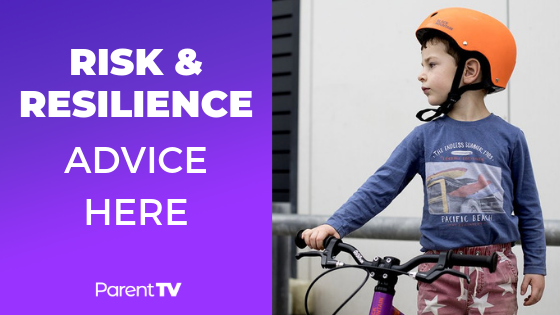Why Kids Need to Take Physical Risks
Categories: General Parenting, Safety
Picture this: You’re at the park, and your four-year-old has taken their balance bike to the top of the hill. They’re gazing down the path, and smiling to themselves. You know exactly what they’re thinking.
‘No,’ you call to them. ‘NO. That’s not safe!’
They turn and look at you, and inch their front wheel forward a few centimetres. You see it unfold in your mind: their tiny body flying right over the handlebars and skidding across the cement, only a flimsy Kmart helmet between them and a catastrophic brain injury. You imagine the blood, the tears, the screaming, the emergency room, and all the other parents looking at you and shaking their heads.
Then, you do nothing.
You close your mouth, and let them fly down that hill.
Are you the worst parent in the world? Absolutely not, says ParentTV expert, Teacher Tom. ‘Young kids are clearly designed to learn through their injuries. They’re low to the ground, they don’t have far to fall, and when they do fall, they hardly ever hurt themselves.’ And, even when they do hurt themselves, they’re far more physically resilient than we think, Teacher Tom says. ‘Their teeth grow back, their bones are flexible, and their skin can heal miraculously quickly.’
Furthermore, there’s precious learning in these circumstances, and it’s learning from the most effective teacher there is: experience. It can be scary to let your child do something that might cause them to get hurt, Teacher Tom acknowledges. But, if you don’t, they can’t grow. ‘We live in a society that’s becoming increasingly risk-averse. But without risk, it’s not a proper childhood.’
It’s also important to let kids assess the risks themselves, Teacher Tom suggests. If adults are always telling kids to be careful and managing the risk for them, they don’t gain an understanding of their own capacities and limits. ‘The habit of self-preservation is already innate. Kids are already being careful. When we say “be careful,” they start to doubt themselves,’ Tom says. Instead, giving children informational statements about potential dangers in their surroundings to be aware of gives them the opportunity to think for themselves and make informed choices, Teacher Tom suggests. Then, the results of these choices teach them further.
So, next time your child picks up a hammer and your instinct is to stop them immediately, pause and consider: Is this a good opportunity for them to learn their own limits and experience natural consequences? Or, is this too dangerous to allow?
Let us know how you go!
Want to hear more words of wisdom from Teacher Tom? Click here to watch.

